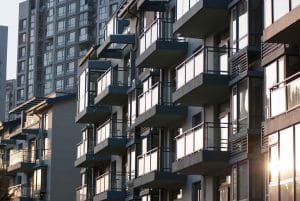Over the past year, house prices have grown at the third-fastest rate in Australia’s history.
PropTrack economist Paul Ryan wrote in the Australian that the 22% rate of growth seen across our capital cities this year, was the third-fastest in history, next to the records achieved in the 1980s and 1950s.
Understanding past episodes of price growth give insight into how remarkable this period has been – and what might come next.
Let's look at the history of housing price growth
Property analyst Michael Matusik charted 140 years of Australian house price growth in a recent blog
This chart analyses the price of houses as units are a relatively modern addition to our housing stock and outlines the key drivers that have influenced the housing market over the past 140 years.
In real terms (2021 dollars) the median house in an Australian capital city was worth $59,250 in 1881.
Today’s median capital city house price is around $750,000.
For those interested the median house value in current terms in 1881 (when converting from pounds) was $870.
As you can see it wasn’t until the 1950s that prices started to increase relative to other goods.
Before the 1950s, land on the fringes of urban cities was both close to CBDs and relatively cheap, which kept a lid on house prices according to Ryan
Once land close to cities became more scarce, along with the high levels of immigration into Australia in the ’50s, ’60s, and ’70s, prices started rising at a faster rate.
Ryan explains that price rises were modest compared with recent history, as higher demand was partly matched by improvements in transportation technology – car availability and the growth of tram and train networks – which allowed more accessibility to further-flung suburban fringe regions.
According to PropTrack, home prices rose by 111% in 1950, coinciding with the end of wartime price controls.
Then in the 1980s, the removal of limits on interest rates for loans, the floating of the Australian dollar, and the introduction of competition from foreign banks modernised the lending sector.
These changes made obtaining credit easier for the typical Aussie family and helped facilitate the housing price boom in 1989 when prices rose by 29%.
Strong price growth has often proceeded to falling values – is that likely again?
Mr. Ryan said:
"While the previous historical episodes of very strong price growth have both been followed by price falls, while property prices are notoriously difficult to forecast, it is hard to see the same downturns befalling the current market, at least in the near-term.
The outlook for price growth in the coming period appears solid, if unlikely to be as exceptional as we’ve seen over the past year," Mr Ryan said.
While the large number of property listings, particularly in Sydney and Melbourne as they come out of the most recent lockdowns, may put some downward pressure on prices,
there remains a very high number of buyers in the market on realestate.com.au waiting to find their new home.
APRA has implemented some tightening of credit conditions, but overall borrowing conditions remain very favourable, and the RBA reaffirmed its expectations that interest rates would not rise for another two years, at least."
In my mind as we move through this cycle and after cycle ends, as all property cycles do, we’re going to end up with a two tier property market.
You often heard me say properties a game of finance with houses thrown in the middle, so areas where people’s wages will grow more will be locations where people will be able to afford to and prepared to pay more to live, but there will be many locations where the locals won’t have more in their pay packet to pay the extra required to buy a home.
At the same time it will be harder for first homebuyers to save a deposit and it would also be more difficult for tenants as rents are already rising and will continue to do so, so rental affordability will be another issue and it will be important to own investment properties in locations where tenants can afford to pay higher rent.
What's ahead in the long term?
Currently there are about 25.5 million Australians and earl in 2021 the Government released the Intergenerational Report to help Australia and the businesses plan for the next 40 years.
The IGR projects an Australian population of 38.8 million by 2060-61, and even though this is a little lower than previous projections – due to Covid slowing things down - this still means Australia’s population is projected to grow faster than most other developed countries.
Despite the reduction of the projected population, these trends are truly monumental.
If you think about it, it’s taken Australia well over 200 years since European settlement to reach a population of 25.5 million people today.
But in the next 40 years, our population will increase by around 13.3 million people.
In other words, it will increase by over 50%!
To make this worse, currently, there are 2.5 people in each household, but the IGR forecasts the average number of people in each household will shrink a little moving forward, meaning we are going to require about a third more real estate than we currently have.
To deal with the projected population growth between now and 2061 it’s likely we’re going to require one new property built for every two properties that currently exists!
All this means our way of living is going to change considerably and town planners will struggle to cope with this growth.
Of course, this will impact property investment choices, but strategic, knowledgeable investors will be well-placed to capitalise on the changing trends.
What this means is there will be many more high-rise towers of apartments, not just in the CBD but in our middle ring suburbs – we are already starting to see that particularly in Melbourne and Sydney.
And there will be lots more medium density housing – in particular townhouses will be a popular way to live with modern large accommodation on more compact blocks of land.
It would be foolish to try moving forward, because no one really knows what’s going to happen to inflation and interest rates, but as more of us want to live in the large capital cities of Australia, and in particular in those locations close to the CBD or the water where there will be more manatees, the scarcity will only push up the price of properties.
ALSO READ: The longer-term legacy of coronavirus – 9 implications of importance to investors


















